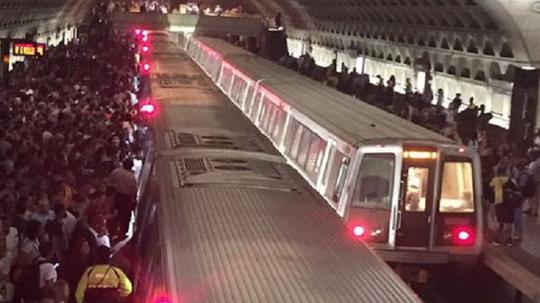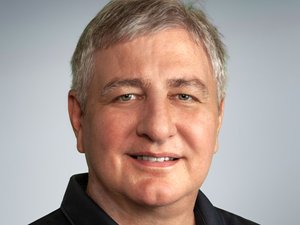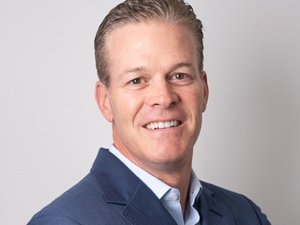
"Larry" had beaten three levels of Candy Crush while waiting for the shuttle bus at the Minnesota Ave Metro station on Monday morning around 9 a.m., before he gave up on the long line and opened up Uber on his phone. The Landover, Md.-based CPA ordered an UberPOOL to take him to Eastern Market Metro, bypassing the closed stations to where he could board the train again.
"That's about 10 or 12 minutes waiting and maybe 10 minutes in the car," Larry, who withheld his last name due to not wanting his boss to know he'd come in late, told me as he headed down the steps to the Metro that would convey him the rest of the way to work. "I knew [the delay] was going to happen, and I thought I was ready for the waiting, but I just couldn't wait any more."
Big wave of commuters here at Benning Road. First line for a shuttle (that wasn't already here) all morning. #wmata pic.twitter.com/TCe5ffKRTT
— Faiz Siddiqui (@faizsays) June 20, 2016Larry and the two others who ended up joining him in the carpool were hardly alone in looking for other ways to commute across the Anacostia River during this second phase of the Metropocalypse, officially known as Metro's SafeTrack program. The shuttered stations won't reopen until after July 3, which presents a problem for commuters, even if they know about it. Many are turning to ridesharing companies' carpool services for a quicker way in that doesn't cost too much.
Well-Informed Commuters
WMATA reported a 65 percent drop in Metro use past where the work is being done compared to a Monday from a month ago, with a 4.5 percent drop in Metro use overall. That could be a good sign.
"We've noticed from surveys we've already done that the vast majority of people think they're well-informed about SafeTrack, which is good," University of Maryland National Transportation Center Director Lei Zhang told DC Inno in an interview. "If people know about it, they can plan ahead. It's good customer relations when 96 percent plus of customers feel sufficiently informed."
UMD is releasing regular transportation impact reports during the SafeTrack program. And while people are aware of what's going on, and even okay with it, Zhang said plenty of people, potentially a third aren't going to use the bridging bus service, which could translate to a lot more vehicles on the road. Unless, that is, carpooling options like the ones from ride-share startups are able to nab the attention of stranded or impatient commuters like Larry.
Carpooling Lures
Uber and Lyft had already been competing for carpoolers during SafeTrack. Both have been offering extra deep discounts for their carpool options during commuting hours, but Uber took it up another level for this second phase of SafeTrack. UberPOOL has a price cap of $5 and $7 for trips that begin or end in Zone 1 or Zone 2 respectively on the map on the side.
That basically means anyone who lives or works in the affected area can have a commute that costs close to their usual amount. In Larry's case, the $4 it had cost him to get from Minnesota Ave to Eastern Market was almost twice the $2.20 for the Metro fare, but still pretty small, while the $3.40 of the Metro ride from Landover would be quite close, if possibly slower than an UberPOOL from that Metro stop to Eastern Market.
"We've put an enormous amount of effort, thought and attention [into] how the transportation ecosystem would be affected and how to respond," Uber East Coast General Manager Meghan Joyce told DC Inno in an interview before SafeTrack began. "[The SafeTrack program is] relatively unprecedented. [We] want to do our part to help the region get around."
Uber is holding specific data for the end of the month, but Joyce said UberPOOL use has risen since the SafeTrack program began. Both Uber and Lyft have induced more drivers to use their variants on that service.
"[Uber is] furthering the idea of carpooling," Joyce said. "We have the tools and tech to do that seamlessly."
Of course, the surge pricing helps bring people around to trying carpooling. Uber's surge price oscillated between 2.1 and 2.6 around Eastern Market Monday morning, while others reported that it was having a ripple effect on pricing around the District.
Appears surge 2 of #SafeTrack is impacting that #uber ride. Just tried getting car out of NW DC. 2.3 X the rate! pic.twitter.com/WlcyUa21PN
— Angie Goff (@OhMyGOFF) June 20, 2016
Getting out of the (Car)pool
The D.C. area has so many commuters, not to mention tourists and other visitors, that the actual transit changes that occur during SafeTrack may not be as big as they seem, at least according to Zhang and his team.
"There's an information gap for ride-sharing," Zhang said. "Uber and Lyft and those kinds of services are in the news all the time but they're still very new. Many people don't know about them."
Conversely, Metro and public transportation can be hugely important to services like Uber and Lyft. Zhang said that the high-profile of the ride-sharing services might attract new people during SafeTrack, but there's no way they could make up for Metro. The ride-share services are well aware of that fact, with Lyft and Uber both encouraging drivers to keep an eye out for passengers near Metro stations who just need to make that last part of the journey home or to work.
"I would say Metro will not lose a significant number of riders because of SafeTrack."
People are planning for SafeTrack in other ways though. are trying to leave home and work early or even just ignore the Metro's shifting schedule entirely when it comes to planning. Inertia, and a general acceptance that SafeTrack is needed to prevent dangerous accidents, will keep a lot of people attached to the Metro, Zhang said, no matter how much they complain.
"A lot of people told us they'll just continue using Metro. They know there's a lot of delay but they'll use it anyway," Zhang said. "If I were to make an educated guess I would say Metro will not lose a significant number of riders because of SafeTrack."
That doesn't mean there won't be at least temporary changes in how people get around. Larry said he planned to use UberPOOL again once he got to Eastern Market. Not a bad idea judging from some of the lines for the shuttle going back across the river.
"I actually kind of like that you meet other people in the car," Larry said. "It's like having an adventure where you don't have to drive."




